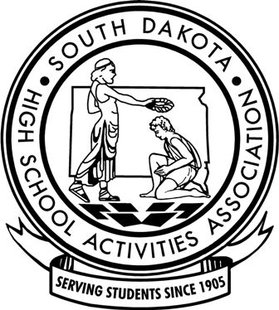Tressel Requests Suspension Increase To 5 Games
Ohio State took such a public relations beating the past 10 days over head football coach Jim Tressel concealing NCAA violations in his football program that he’s gone Animal House in search of absolution.
Tressel, originally handed a two-game suspension by the school for his deception, met word from the NCAA that none of his implicated players will have their five-game suspensions reduced with a response straight out of the Faber College fraternity wars.“Thank you, sir, may I have another?”
“Thank you, sir, may I have another?”
“Thank you, sir, may I have another?”
OSU athletic director Gene Smith said Tressel asked to have his suspension increased to five games, matching those quarterback Terrelle Pryor, tailback Daniel Herron, receiver DeVier Posey, tackle Mike Adams and defensive lineman Solomon Thomas will serve for trading their team awards and memorabilia for cash and free tattoos.
The five-game hits will keep Tressel and the Tattoo Five off the field this fall until OSU’s Oct. 8 game at Nebraska.
Tressel, though, could get a stiffer penalty from the NCAA, which has yet to rule on his wrongdoing.
The players, on whose behalf OSU had appealed for a reduction in penalties, stood no chance of getting their suspensions lessened once the latest revelations arose.
Tressel and his players will miss tune-ups against Akron and Toledo, a trip to Miami on Sept. 17 and home games against Colorado and Michigan State the next two weeks.
Tressel can, however, coach the Buckeyes throughout spring and fall camps and throughout game week. Likewise, Pryor and his teammates can practice the entire time, but must sit out on Saturday.
Tressel’s beefed-up penalty from two to five games is a clear effort to trump the NCAA’s ace before it administers punishment for an on-going scandal Smith thought he put to bed in mid-December.
That’s when he famously said, “There are no other NCAA violations around this case. We’re very fortunate that we do not have a systemic problem in our program. This is isolated to these young men, isolated to this particular instance. There are no other violations that exist.”
Tressel sat next to Smith on the dais at the time of that statement. The coach did not admit to getting an email nine months earlier that detailed the framework for those violations until OSU confronted him in mid-January.
A search of Tressel’s email two months ago showed correspondence with a Columbus attorney from the previous April. He told Tressel of Pryor and Posey’s involvement in the cash and tattoo caper five months before the 2010 season began.
Four more such emails, detailed and specific to the players’ activities, arrived over the next two months.
OSU went 12-1 and won the Big Ten championship and Sugar Bowl playing all five players who were eventually implicated.
Now, the question becomes whether the NCAA will allow those victories to stand or rip them from the record book.
The outlook isn’t good for the Buckeyes having 2011 championship rings to sell if recent NCAA penalties for repeat violators is the standard.
According to the NCAA web site, Ohio State seems a clear repeat violator. Its clock for that characterization started on March 10, 2006 when the NCAA levied penalties for violations involving former basketball coach Jim O’Brien and former player Boban Savovic.
The NCAA terms a repeat violator any school where “a major violation has occurred within five years of the starting date of a major penalty.”
In its ruling on the O’Brien/Savovic matter, the NCAA ruled: “Ohio State University shall be subject to the provisions of NCAA Bylaw 19.5.2.3, concerning repeat violators, for a five-year period beginning on the effective date of the penalties in this case, March 10, 2006.”
OSU has already acknowledged major violations by the players in the Tattoo-Gate matter, and now it has admitted major violations by Tressel.
While the violations involve the same circumstances, they are separate cases, and both occurred within OSU’s five-year window as a repeat violator.
Two of the three cases involving NCAA repeat violators in 2010 resulted in games being vacated at Alabama (football) and Arizona State (baseball) for the years in which rules were broken. ASU was also ruled ineligible for the postseason and had scholarship reductions imposed.
Michigan escaped such harsh penalties because its major violations in the football program came so long after those during the Fab Five era, which were not discovered until almost 10 years later.
Tressel’s increase of his suspension from two games to five saved him the embarrassment of the NCAA dropping that hammer, as it most certainly would have given what NCAA President Mark Emmert told CBS Sports in December.
“We certainly want to uphold the standards for coaches — who are the teacher and the authority figure in that relationship — to at least the same standards that we hold our students,” Emmert said.
“All these situations are case-specific, so you can’t easily or appropriately generalize. But I want to make sure that we’re creating an environment where coaches and universities are appropriately rewarded for good behavior and punished for bad behavior. I know that sounds silly and trite. But we do need to have a situation where when coaches … are committing major infractions the penalties will be significant enough that they serve as a discouragement to that kind of behavior.”
Both Ohio State and the NCAA looked silly in the aftermath of the first Tattoo-Gate revelation, conducting a supposedly comprehensive investigation that Tressel clearly stonewalled.
OSU’s latest self-report to the NCAA said Tressel failed to disclose his knowledge of the players’ violations:
• upon signing an NCAA rules compliance form in September that he knew of no possible violations in the program,
• on Dec. 9 when notified of the players’ rule-breaking via a Department of Justice raid on a tattoo parlor,
• on Dec. 16, when OSU officials again asked Tressel about whether he had any prior knowledge of his players’ activities in violation of NCAA rules.
Ohio State’s report said that, “When Coach Tressel was asked if he had been contacted about the matter or knew anything about it, he replied that while he had received a tip about general rumors pertaining to certain of his players, that information had not been specific, and it pertained to their off-field choices.”
The five emails Tressel received in April and June (readily available online) were detailed and specific in outlining the players’ behavior that was in clear violation of NCAA rules.
Thursday night, when announcing he would sit out five games instead of the two OSU recommended, Tressel released a statement that said:
“Like my players, I am very sorry for the mistakes I made,” Tressel said in the statement. “I request of the university that my sanctions now include five games so that the players and I can handle this adversity together.”
So there’s the apology that never came 10 days ago when Tressel, Smith and university president E. Gordon Gee whiffed on the press conference announcing the coach’s NCAA wrongdoing.
They can only hope Emmert and his Committee on Infractions focuses more on Tressel’s reputation for integrity than on his actions which defied that image.







